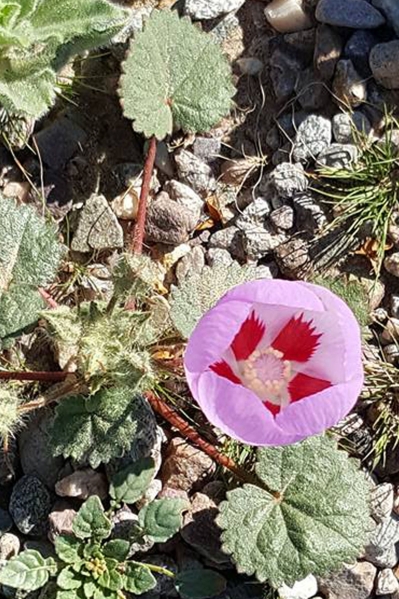
A weather system that occurs every two to three years is bringing a natural art display just outside of town.
Death Valley National Park wildflowers that have bloomed thanks to El Niño bringing winter rains and mild temperatures have created visually pleasing wildflower displays in the popular tourist attraction.
Since July, Furnace Creek in Death Valley has received just over 1.5 inches of rain, with some parts of the national park receiving more than a year’s worth of rain in October.
“This is the earliest I can ever remember seeing flowers in the park,” says David Blacker, executive director of the Death Valley Natural History Association.
The appearance of spring wildflowers depends on several factors.
“Most of the showy desert wildflowers are annuals, also referred to as ephemerals because they are short-lived. Oddly enough, this limited lifespan ensures survival here. Rather than struggle to stay alive during the desert’s most extreme conditions, annual wildflowers lie dormant as seeds,” Blacker said. “When enough rain finally does fall, the seeds quickly sprout, grow, bloom and go back to seed again before the dryness and heat returns.”
Peak viewing along the highways and at the most accessible areas of Death Valley generally occurs late February through mid-April, but wildflowers can still be seen at the highest elevations as late as July.
Wildflowers are already appearing on the dunes and alluvial fans at the lowest elevations. Desert Gold, Desert Sand Verbena, and Desert Five-spot have already appeared at Ashford Mill on Badwater Road.
If you travel about 50 miles east of Death Valley to Ash Meadows National Wildlife Refuge, wildflower viewing has also begun there. The natural springs in Ash Meadows are home to endangered desert pupfish, and attract an abundance of wildlife from birds to big horn sheep.
The Death Valley Natural History Association is a nonprofit organization dedicated to preserving and interpreting the natural and cultural resources of the Death Valley region in cooperation with their government partners Death Valley National Park and Ash Meadows National Wildlife Refuge.
For wildflower books, brochures, and the women’s cut Limited Edition 2016 “Panamint Daisy” T-shirt, please visit them online at https://dvnha.org/opencart. Proceeds benefit Death Valley National Park.
Wildflower updates can be found here: www.nps.gov/deva/learn/nature/wildflower-update-2016.htm. For more information about Death Valley National Park and trip planning, see www.nps.gov/deva or call 760-786-3200.
Contact reporter Mick Akers at makers@pvtimes.com. Follow @mickakers on Twitter.